BONANNO_CARLETTI Es.2 Solar Radiation
After the modelling of the area (by the creation of volumes,balconies,void and windows)we can start to analyze the solar radiation on the area and on the builings.
So open the menu "Analyze" and click to "Solar Radiation"
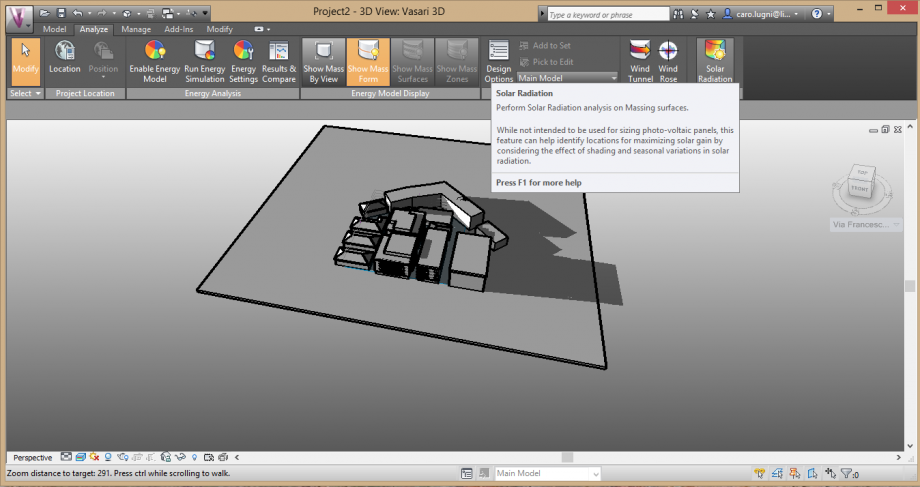
after that Vasari open a new window where we can choose the detail of our analysis:first of all set the unit to "kWh/m2" "Type<comulative" and "Style<solar radiation default" after that we can choose the accuracy of analysis that is set by default at 50%,at least we can choose to analyze one particular surface by clicking on "Select mass faces to analyze" or all the model
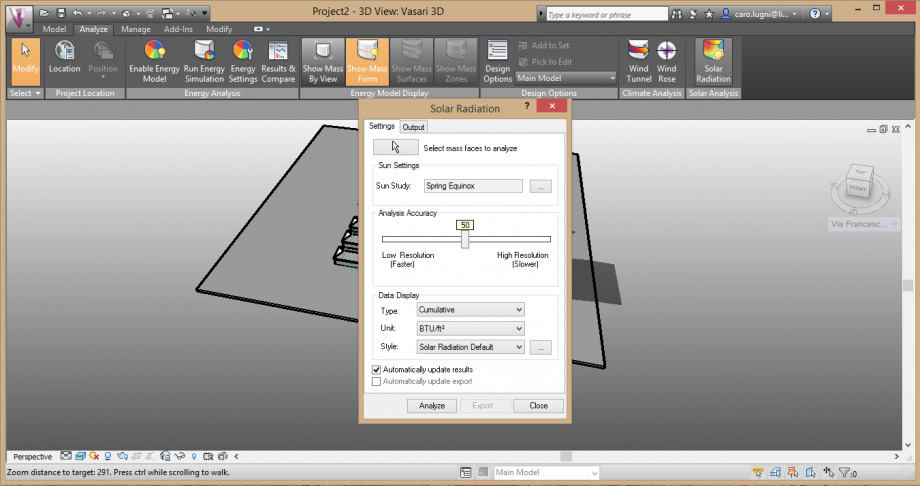
After setting this option you can set the period for the analysis by clickind on the three dots near "Sun studies",here we can choose the sun settings:
First of all set the solar study on "multi-day" click on one of the preset you need ( we have used summer and winter solar studies),for the rest you can leve the Vasari default options.
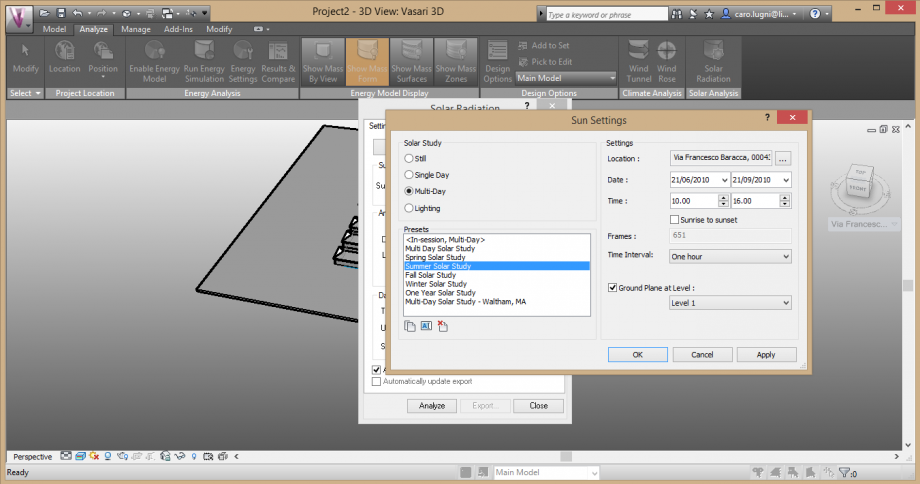
after that you can customize the graphic configuration of your analysis by clickin on the three dots near the style menu on the solar radiation main menu.
We set "Ecotec stile" on the left and choose the red for the higer and hotter result and blue for the lower and cooler result,by clicking on the legend menù you can also choose the range of values that you need.
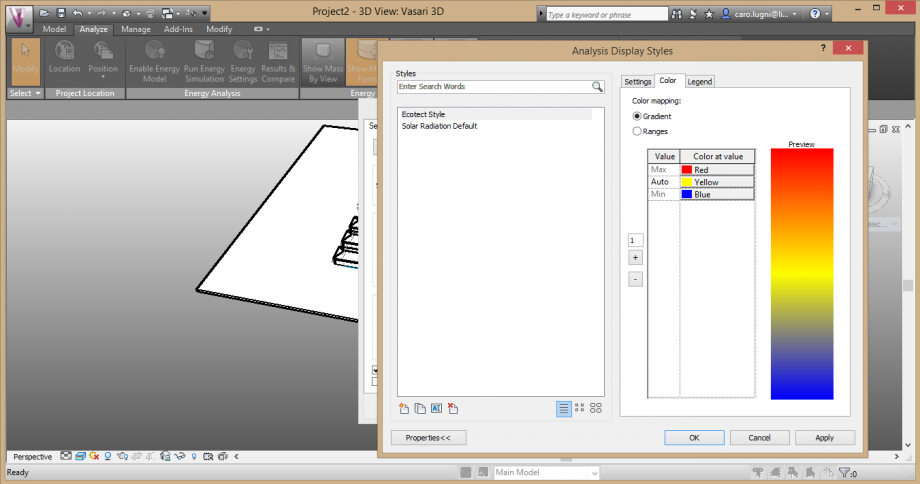
After setting the options for the analisys and after creating our custom style for the rappresentation we can start to analyze the area with te solar radiation.
We've choose some intersting view of the area in the different season,the results confirm the supposition that we've just expres on the study of shading:
the first one that we're going to analyze is the South-East view of analyze is the South-East view of the area
-Summer
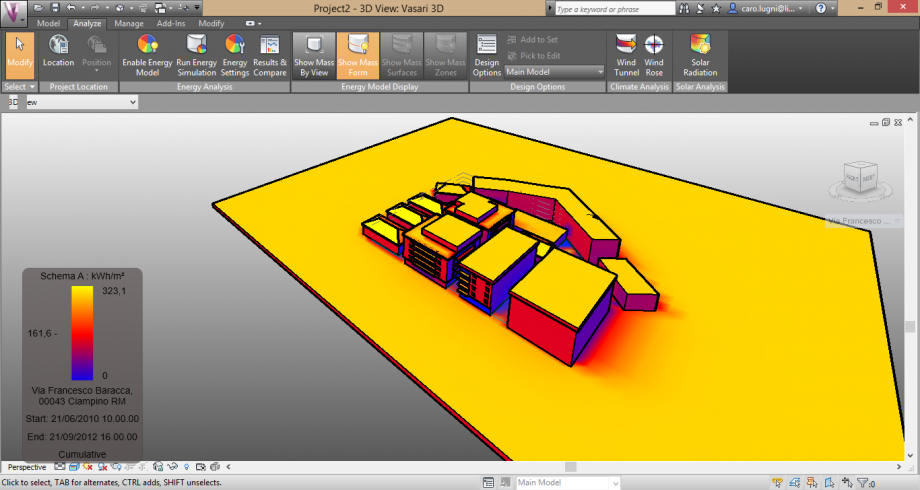
-Winter
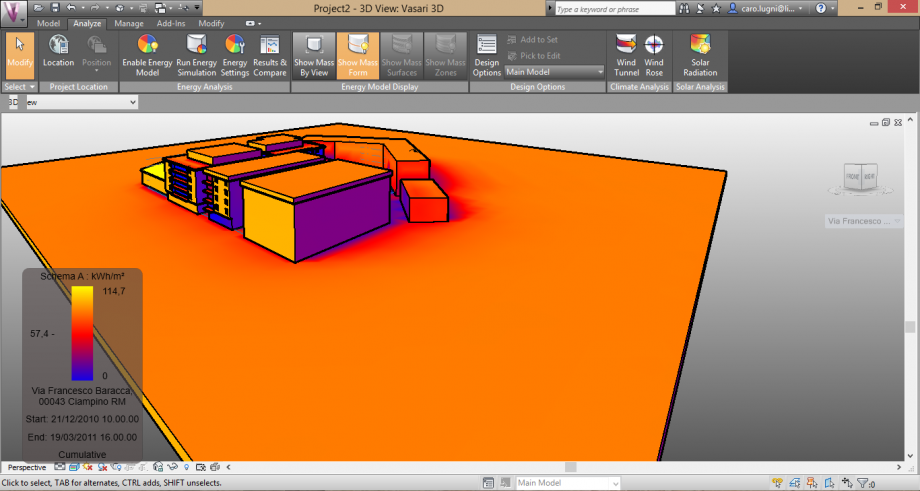
By this viewing we can observe that a constant both in winter and in summer is the cold area that the solar radiation create between the edifices,and obviously the cold areas on the balconies but the most important thing is that between the buildings there is a cold area during the all year,this could be useful on summer and on the hotter day of the year,but culd be critic during the rest of the year,first of all for the quality of the life in the internal side of the complex,secondly because of the creation of molds and wet stains in this area.
We can see more in detail this situation if we tacke a look on the internal court (during the winter,the most critic period):
-North-East
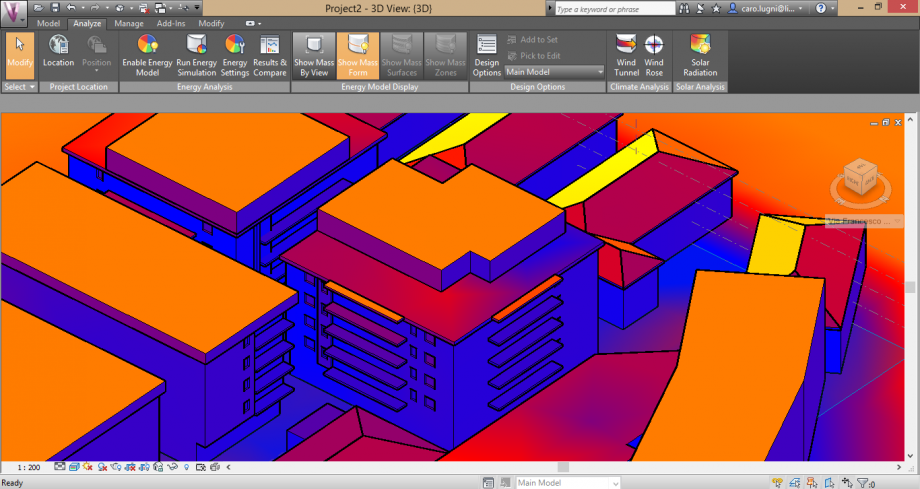
-Nort-West
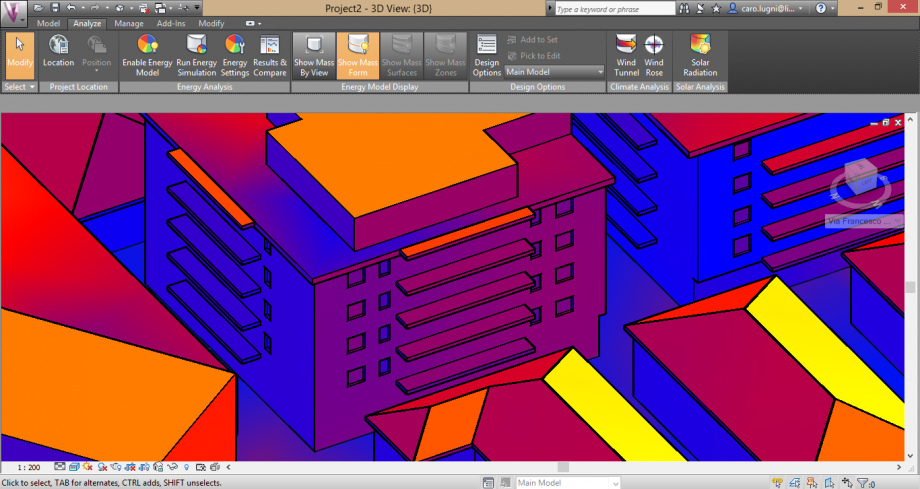
The court as we saw is always shading during the winter days,but these immages confirm the situation,this situation could be a real problem for the life inside,the heating costs ecc...
By the observation of the West facades we can see the same problem:
-Summer
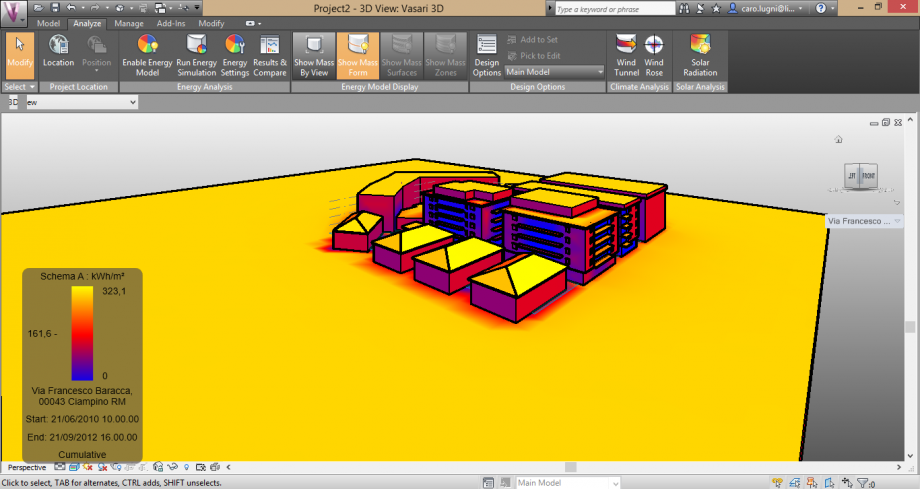
-Winter
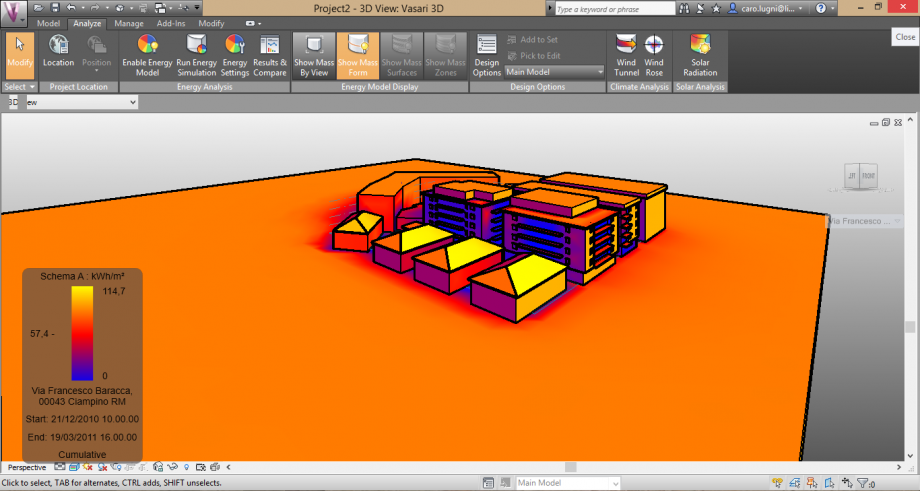
Here we can see another problem:the more external west side of the comlex is really cold,but here we've some big windows and balconies,this thing express the contradictory nature of the area,and show that the building was built without attention at the issues of sunshine,as we told on the shading report.
Another intersting view is on the south elevation that facing Via Francesco Baracca
-Summer
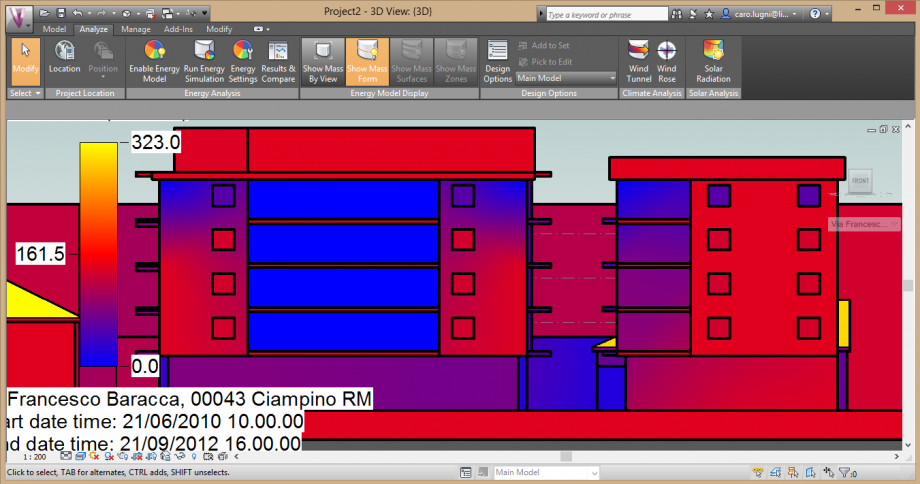
-Winter
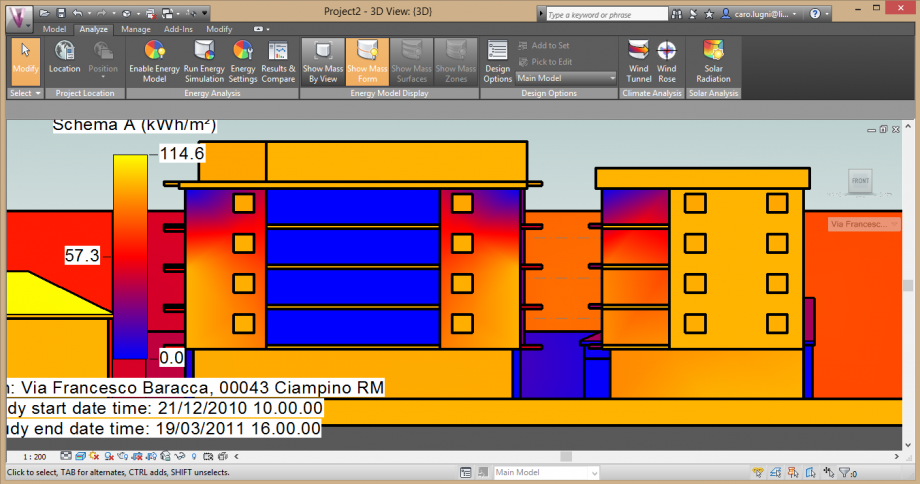
we can say that the behavior of the facade is quite normal,except for the external corner on the last floor near the roof,in fact in that particular areas we can see an anomalous change of color,it rappreset a critic area where the Kw/h m2 quickly change,theese are the areas where we can see anomalous behavior of the masonry and the plaster and not high quality of architecture.
With the Solar Radiation we've also analized the project area where we're going to project a temprary residences,the area is setting in Rome on the intersection between Via degli Orti Di Cesare (near the train station of Roma Trastevere)Viale di Trastevere and Circonvallazione Gianicolense,is a very intersting site not only for its history but also for the position and topography of the area
-Area Winter
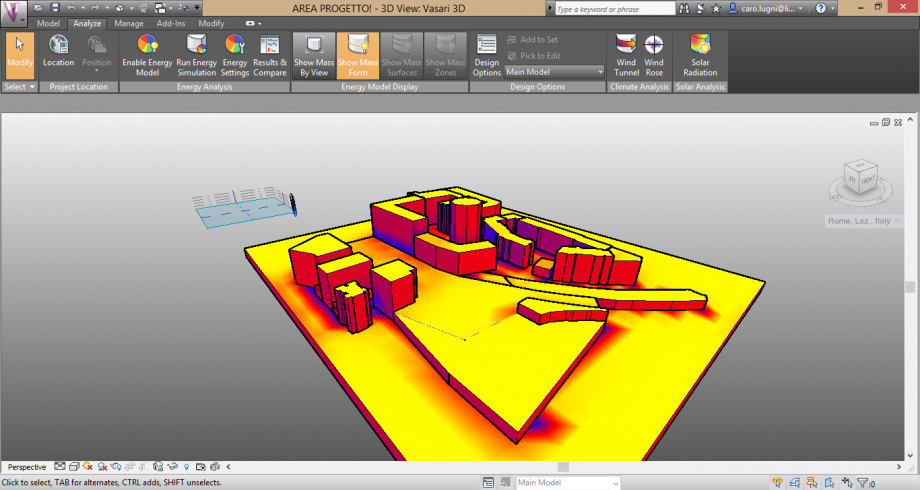
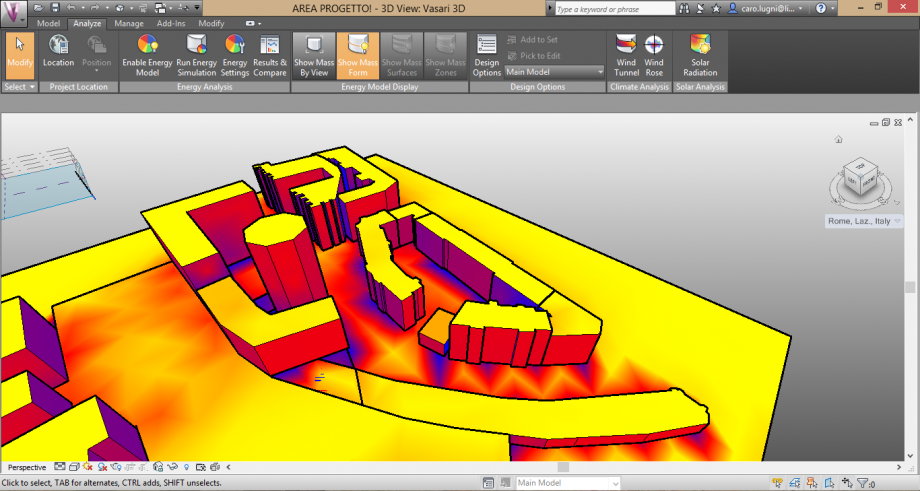
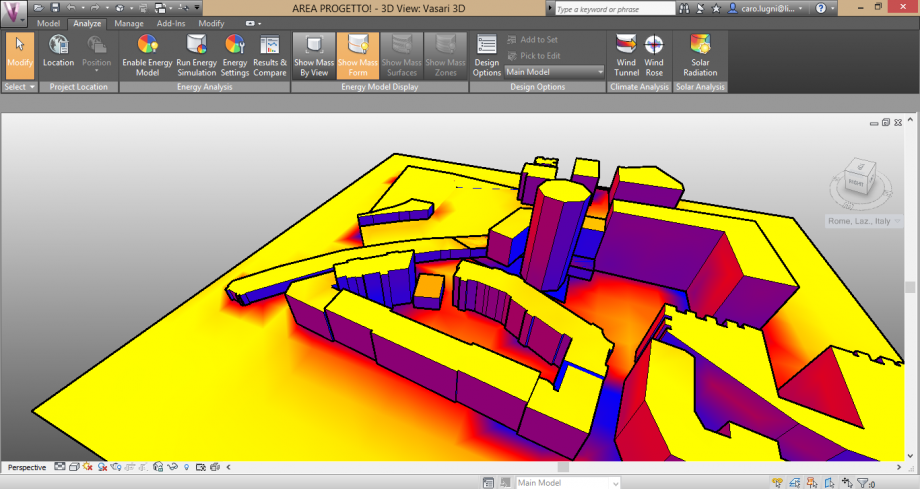
we've also insert the volumes of our project (or what is our first idea of the project) and we've seen a quite good behavior during the winter season,this analysis could be an important way to see and adjust the problem of the project.


